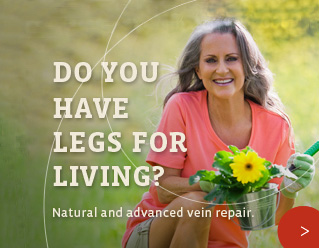Frequently Asked Questions
Why do some individuals have varicose veins?
Varicose veins are created by damaged or unhealthy valves in the venous system that returns blood from our legs to our heart. Usually these valves limit pressure from the pool of blood in our upper bodies. When dysfunctional, a condition of vein hypertension is created, and an uninterrupted column of blood visibly distends the veins in the lower extremities.
Who can get varicose veins?
Affecting almost 25 million Americans, varicose veins are more common in women than men (30% of women and 15% of men). Displaying a hereditary predisposition, varicose veins are seen with advancing age, following pregnancy, in those whose profession requires abundant standing, and subsequent to the resolution of blood clots in the legs.
What are some of the symptoms of venous insufficiency?
Patients complaints include prominent varicosities, swelling, phlebitis or inflammation, restless legs at night, as well as sensations of heaviness, aching, and feeling tired.
How are vein disorders evaluated?
Following a consultation with a physician which includes a historical interview and examination, patients are scheduled for a lower extremity ultrasound. This well-tolerated procedure lasts about an hour, and involves the mapping of an individual’s venous drainage system, as well as evaluation of the competency or health of the valves, which contribute to vein disorders.
What therapies are offered for venous insufficiency and varicosities?
The principal behind contemporary vein care involves interruption of the superficial vein system that contributes to the problem. Commonly, a procedure termed radiofrequency ablation is performed in the office as an outpatient. This procedure entails the introduction of a specialized catheter in the leg vein, and applied microwave energy that causes a portion of the vein to shrivel and close. (See VNUS. com.)
Other procedures that are performed in the office include phlebectomy (the removal of small portions of vein) under local anesthesia, as well as sclerotherapy, which involves the injection of small amounts of a soapy material in very small vein leading to their closure.
What is the recovery time from a VNUS radiofrequency closure procedure?
These procedures are very well tolerated, permitting one to leave the office only with a wrap around his/her leg. Patients come back to the office in a couple of days for a follow-up ultrasound to confirm success, and the wrap is removed. Although the continued use of support hose is encouraged, patients can return to work and an active lifestyle soon thereafter.





